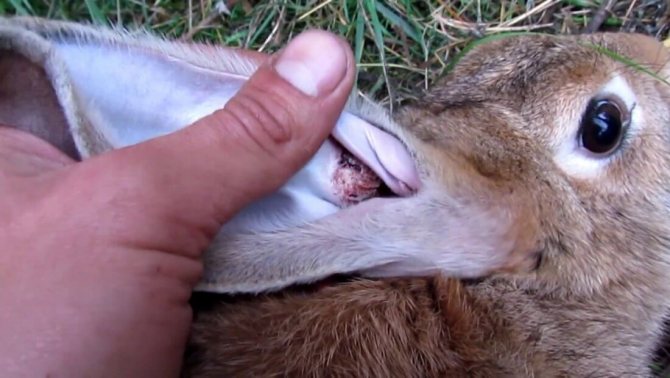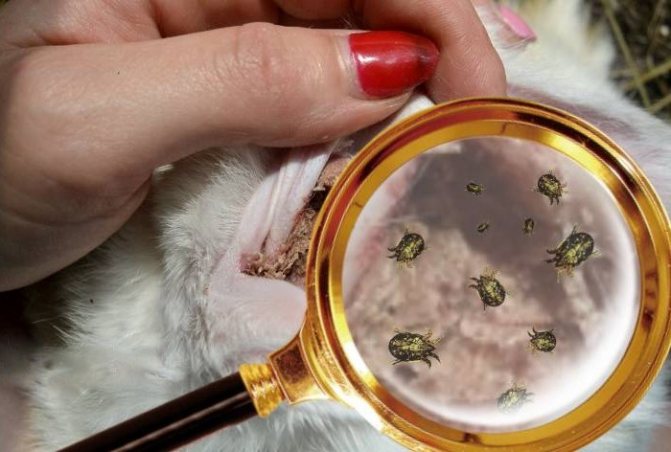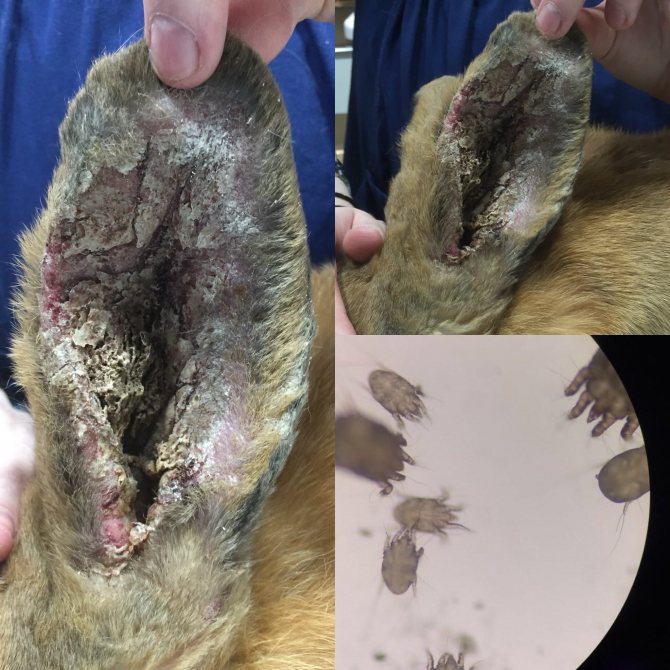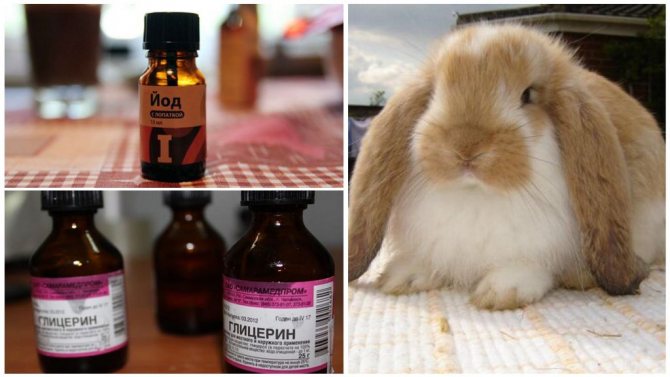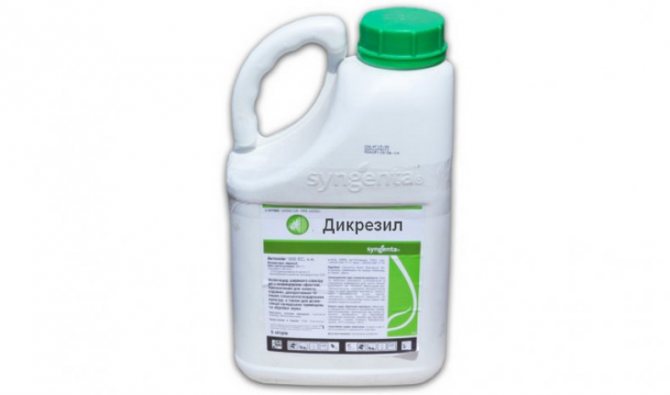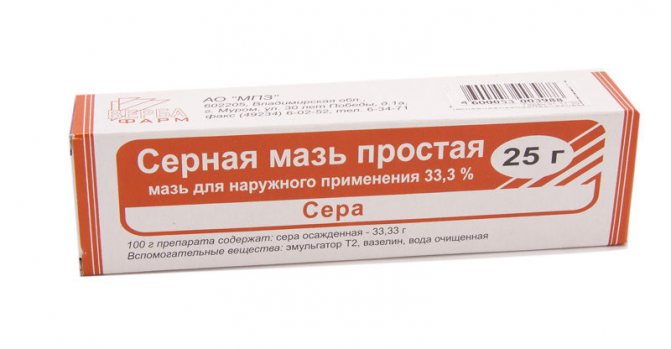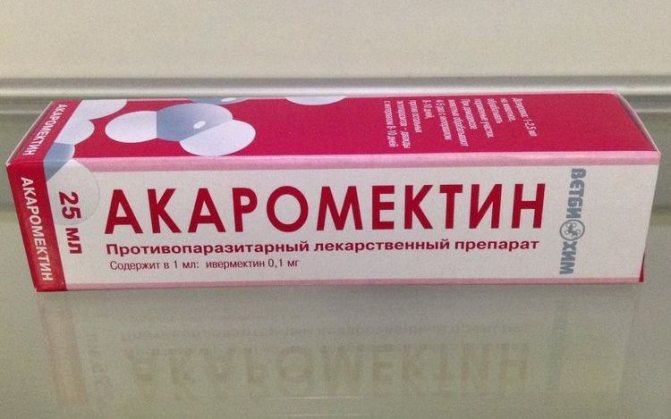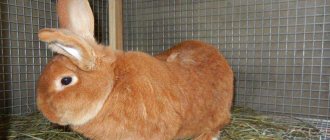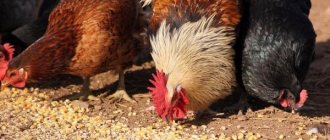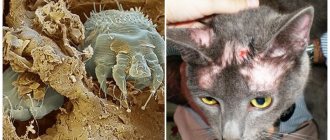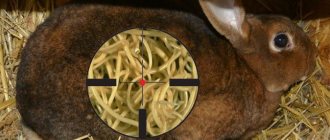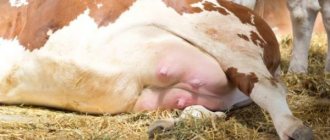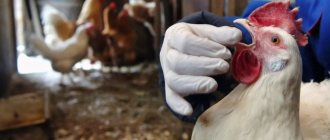Ear diseases in rabbits are not uncommon. It is this organ that is one of the most vulnerable in the body of the animal, therefore, each individual on the farm should be subjected to regular external examination. Neglected ear diseases in rabbits can cause deterioration or death of the livestock. The most common diseases include psoroptosis, myxomatosis and purulent otitis media.
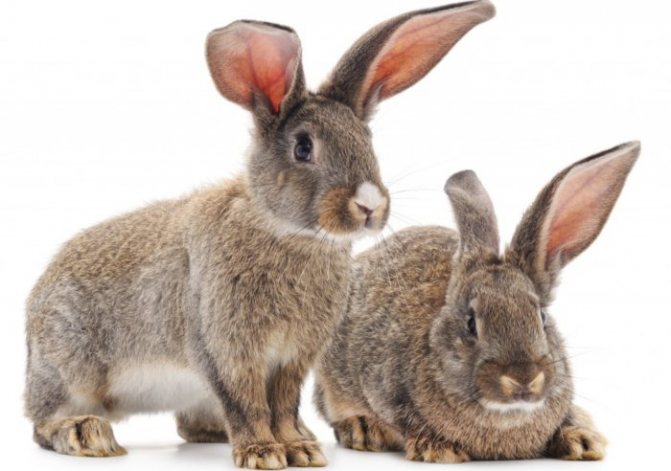
Ear diseases in rabbits
Psoroptosis in rabbits - what an ear mite looks like
In rabbits, ear scabies is provoked by a cutaneous mite. - psoroptes cuniculi. The size of the parasite varies in the range of 0.5-0.9 mm, the body is yellow, sometimes with a shade of brown, has the shape of a rounded oval.
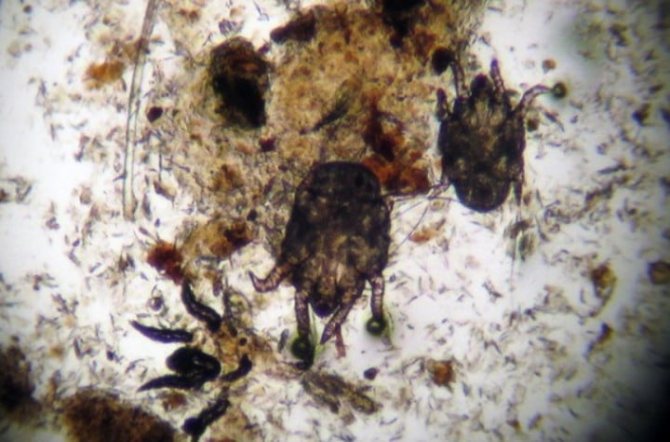

It is difficult to see ticks with the naked eye, it is better to use a magnifying glass
The jaws are long and strong which allows you to pierce the epidermis and suck out intracellular and tissue fluid. There are 4 pairs of legs along the edges.
The insect lives in the ear of a rabbitmoving and piercing the skin, damaging tissue, irritating nerve receptors with bristles on the legs, which causes severe itching.
The condition of the epidermis is aggravated by a toxic substance that ticks secrete when biting, causing an allergic reaction.
As a result, the skin in the ear becomes inflamed, local nutrition decreases, and recovery processes are disrupted.
Cells degenerate into keratinized scaly particles. Pathogens penetrate the wounds, which provoke suppuration.
Important! Psoroptosis can occur at any time, but outbreaks of ear scabies in rabbits are observed mainly during periods of cold snap.
All age groups are susceptible to the disease, more often the infection is detected in adults, less often young and rabbits get sick. Young animals become infected from the mother when the pathogen is transferred from the ears of the rabbit to the offspring.
Ways of infection with psoroptosis
There are several options:
- Through particles of the patient's skin to a healthy individual.
- From mother to offspring.
- From parasites that remained in the cage where the sick animal was.
- From the owner.
The disease can spread in winter and spring due to improper pet care. Especially carefully you need to monitor the nutrition and moisture in the cells.
Most often, adults from 4 months old suffer from ear mites. Within 5 days, the disease proceeds without any symptoms. On the sixth day, blood wounds can be seen. After the ichor dries, sulfur plugs may appear, from which the rabbits may stop hearing.
How rabbits become infected with ear mites, how does it develop
Source of infection - a rabbit infected with scabies, ticks fall out from its ears simultaneously with peeled skin scales and scabs and move to healthy animals.
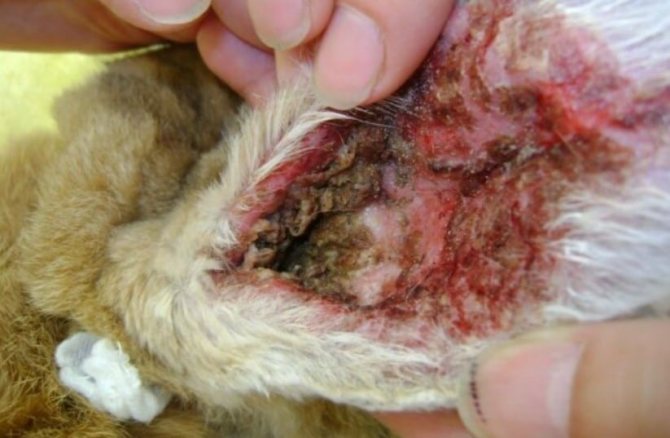

Rabbit ear mite
Infection occurs:
- close contact;
- through objects, bedding, feeders, owner's clothes, inventory;
- when transplanting healthy rabbits into a room where sick individuals were kept.
In rare cases, cats or dogs that accidentally become infected in a dysfunctional economy can bring insects on themselves.
Favorable factors for the development of the disease:
- tightness in the cage;
- humidity;
- regrouping of animals;
- malnutrition.
Important! A significant role in the spread of infection is played by hidden carrier, when adults and nymphs live in the outer ear of apparently healthy rabbits.
When the optimal environment for the continuation of the cycle arises, arthropod parasites are activated, which causes an outbreak of disease in the herd.
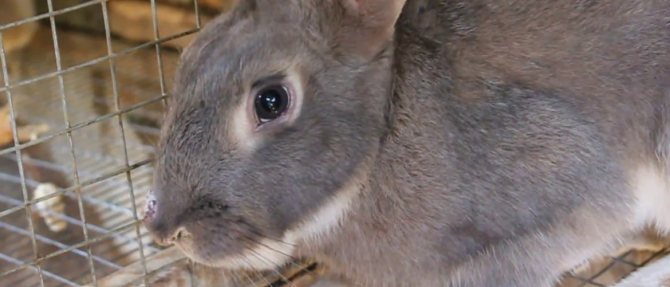

Development phases
When mites penetrate the skin of the ear, they begin to actively reproduce, one female reproduces up to 60 eggs, which are glued to the skin scales with uterine secretion.
Further life cycle includes the following phases of development:
- Larva. Has 6 legs, comes out on average after 4 days. Molting occurs in 2-3 days.
- Protonymph. This is the nymph of the next stage.
- Teleonymph. Preparatory stage for puberty.
- Imago. Males mature 2 days earlier than females.
With sufficient temperature and humidity, the development period for males is limited to 14 days, females mature in 16. The parasite lives on the skin of a rabbit for 2 months.
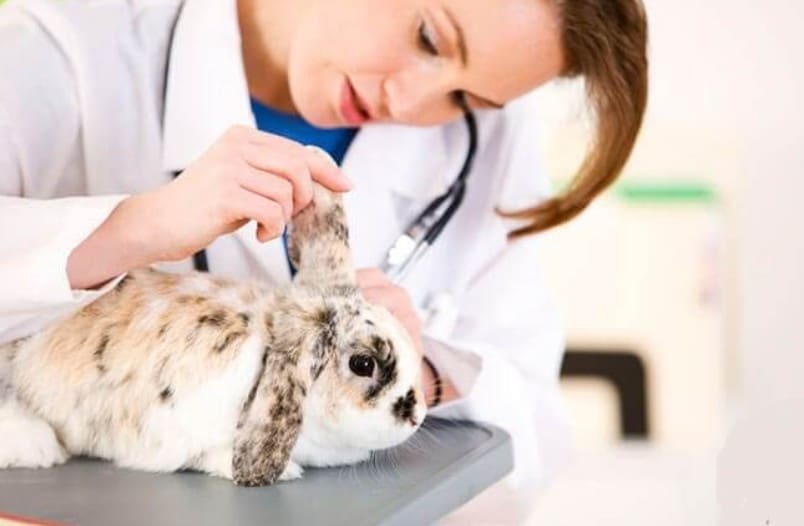

It is best to go to your veterinarian to confirm the diagnosis.
Males create copulatory pairs with female nymphs of the second phase, holding the insect with their legs. Fertilization occurs at the moment the female leaves the teleonymph shell.
Seeded ticks pose a danger in the spread of the disease.
It is interesting! The duration of the transformation phases from egg to adult insect is determined by the temperature and humidity of the environment. At + 35 ° C and low humidity, the life cycle is extended to 55 days.
Sarcoptic mange
Sarcoptic mange also cause scabies mites. The causative agent is a small mite. Mites parasitize the epidermis of the skin. Healthy rabbits become infected through contact with sick animals or through care items. The contributing factors in the spread of the disease are overcrowding of animals, high humidity in the premises, and inappropriate feeding.
In animals, itching and inflammation of the skin is observed. Hair in the affected areas sticks together and falls out, the skin thickens, becomes crusted, pustules and cracks appear. Ticks first affect the scalp, and then spread throughout the body of the animal, more often they affect the skin of the lower neck, front and hind limbs, and the abdomen. They live on the body for 4-6 weeks, outside the body for 3-4 weeks. The disease reaches its greatest distribution in the autumn-winter period.
Sarcoptic mange treatment
For treatment Murin's ointment is used (carbolic acid 20 g, tar 20 g, turpentine 10 g, green soap 200 g, water - up to 1 liter). After preliminary preparation (washing with warm water and soap to remove crusts), the animals are treated with 3% creolin emulsion. Processing is carried out twice in 6-8 days. To prevent disease, rabbits are periodically examined. Affected animals are isolated and treated. Cells and territory are disinfected with 5% water hot (80-85 degrees) creolin emulsion. Solution consumption - 400 ml per 1 square meter.
For treatment a 60% aqueous solution of hyposulfite is also used. First, the solution is rubbed into the affected areas with a brush. When the treated areas are dry and covered with hyposulfite crystals, they are treated with 5-10% hydrochloric acid solution. A separate brush is also used for the acid. When hydrochloric acid and hyposulfite interact, sedimentary sulfur and sulfurous anhydrite are formed, which deeply penetrate the skin. The treatment is repeated after 5-7 days.
Is it only in the ears of a rabbit that a scabies mite lives?
In rabbits, cutaneous parasites are localized and multiply directly in the auricles, but sometimes they crawl out onto the body and stay there for a while, and then move on to other animals.
Ticks are found on the skin of the neck and back, extremities with a strong spread, where they get as a result of scratching.
It is interesting! It is assumed that attachment to the habitat on the body of lagomorphs is associated with minor sweating in this area.
Earwax
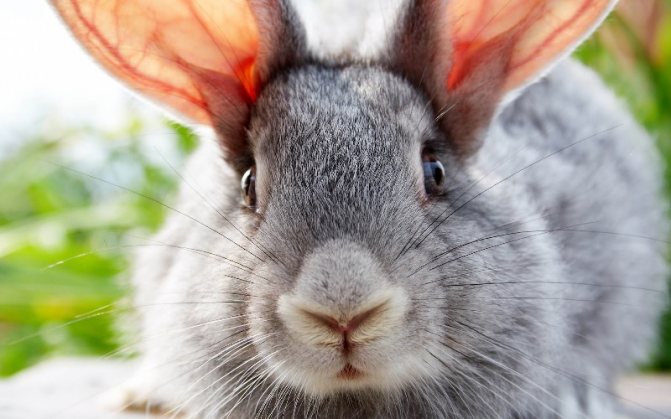

If your pet's ears are filled with sulfur, you just need to remove it. However, this must be done tenderly so that the animal is not frightened and does not harm.
The process of cleaning the auricles consists of several steps:
- Gently fold back the edge of the ear.
- Take a cotton swab and remove the sulfur. In this case, you do not need to climb inside the ear.
- Carefully examine the auricles and determine if they have redness, peeling. The skin should have a pale pink tint. If sores or redness are found on the ear, take your pet to your veterinarian. If sulfur has an unusual smell for her, this may mean that parasites have settled in the ear.
How to understand if a rabbit is infected with psoroptosis - an ear mite
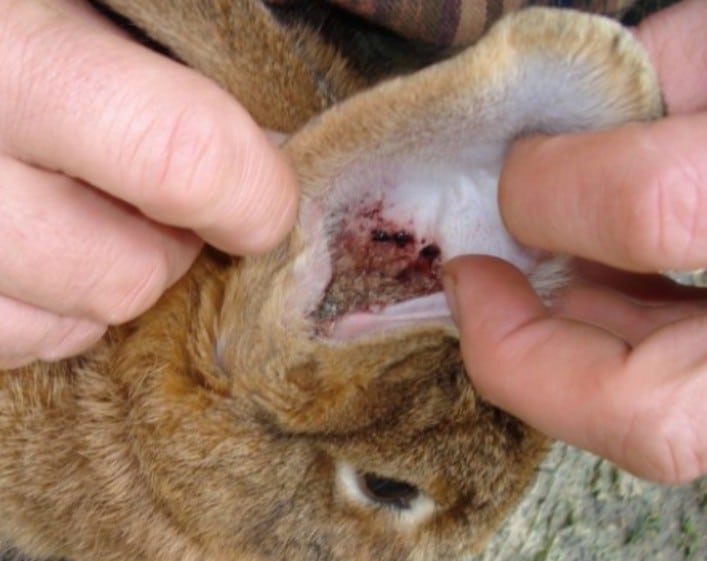

If a tick is found, it is necessary to relieve the rabbit from itching, since combing the ears not only promotes the spread of the tick, but also gives the animal great inconvenience.
Infection with the parasite causes discomfort, so the host determines the infection by the following criteria:
- pets often itch;
- rubbing ears with front paws;
- shake their head;
- there is an increased accumulation of sulfur in the ears, which distinguishes the disease from frostbite.
Examination of the animal reveals scratching around the ears, redness and nodules filled with fluid are noticeable in the ear canal.
Important! If the disease is asymptomatic, the presence of a tick can be suspected by the dirty ears of pets.
general information
Psoroptosis is an ear mite that often affects the ears of domestic rabbits. The causative agent of this disease is an oval yellowish mite. During infection with this disease, the pathogen spreads from the inner walls of the auricle to the area of the ear canal and middle ear. The disease can spread from adult rabbits to young individuals.
A rabbit can become infected with an ear mite through contact with already sick individuals. Infection usually occurs through the scales of the skin, dandruff, which can peel off along with the parasites.
Rabbit ears can be affected by various diseases in the presence of the following adverse factors:
- crowded content;
- if there is poor feeding, which includes feed mixtures with a low content of vitamins;
- high level of humidity;
- helminthiasis and other infectious pathologies.
The most pronounced signs of psoroptosis appear in spring and autumn.
Symptoms of rabbit ear scabies, psoroptosis without complications
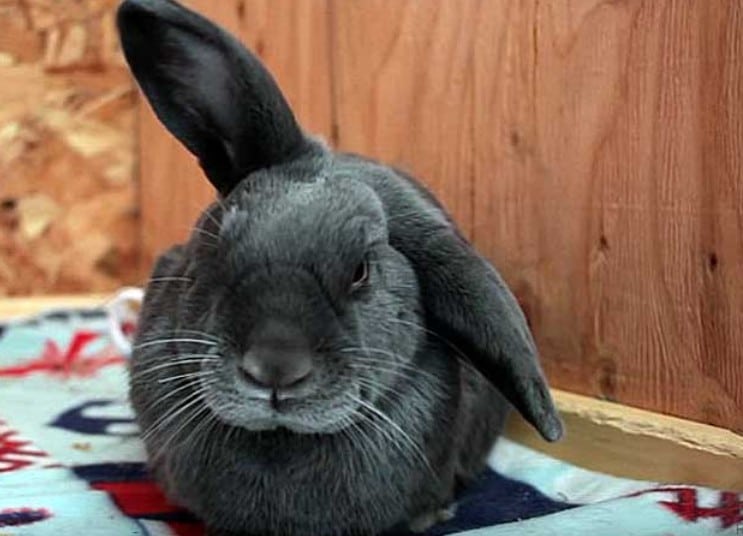

The first signs of infection appear 1-14 days after the parasite hits the ears of the rabbit
The first signs of infection appear 1-14 days after the parasite enters the rabbit's ears. Insects irritate and damage the skin, and the response is to increase the production of the sebaceous glands, leading to inflammation.
The course of a simple form resembles foci of weeping eczema, the disease is manifested by the following symptoms:
- severe itching: the animal itches, turns its head;
- small bumpy redness forms on the affected areas - a consequence of bites, then they turn into serous vesicles;
- after a day or two, the vesicles burst, a yellowish liquid flows out of them, forming grayish crusts when dried;
- the production of sulfur increases, it is concentrated in the auricles in the form of brown-yellow lumps.
The condition of the rabbits is satisfactory, sometimes there is anxiety, a decrease in appetite, the females abandon the rabbits. Allergic responses are possible in the form of rhinitis, lacrimation.
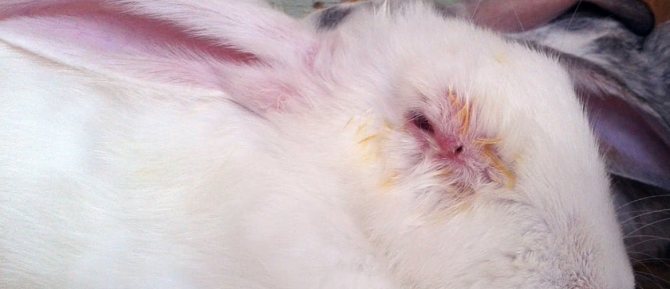

If the symptoms are ignored, the animal's auricle becomes covered with layers of scabs, sometimes they block the ear canal.
Pathological changes penetrate the eardrum, causing purulent inflammation. In advanced cases, the process goes to the neck, back, limbs.
Important! The final diagnosis is made by the veterinarian based on the results of microscopic examination of the material from the affected area. To independently identify the presence of the parasite, you need to carefully remove part of the crust and skin scales from the pet's ear, put it on a glass plate, and drip liquid paraffin. When viewed with a magnifying glass, moving parasites are clearly visible.
Common Symptoms of Ear Disorders
Visually, the occurrence of an ear disease is quite simple to identify: due to pain or itching, the animal constantly rubs its ears with its paws or scratches them against the walls of the cage. The following symptoms are also noted:
- restless behavior;
- decreased appetite;
- weakness;
- decreased fertility.
When a disease occurs in a rabbit, ears may fall, and the head is forced to tilt to one side. A thorough veterinary examination of an animal with such signs will allow an accurate diagnosis and timely treatment.
Treatment of ear mites in rabbits with folk remedies at home
In the treatment of the disease, folk recipes are used, the negative effect on insects of which is based on the effects of sharply smelling oily compounds.
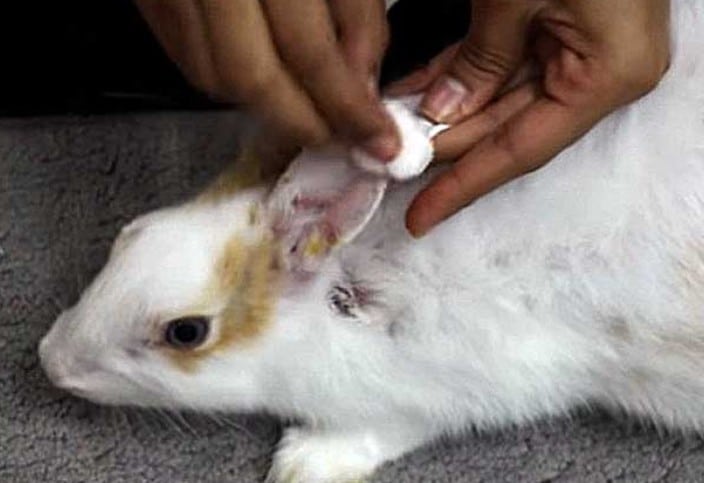

A mixture of glycerin and iodine (alcohol solution) in a ratio of 1: 4 is well suited for soaking the scabs.
They soften scabs and crusts and prevent the parasite from breathing normally. What methods are suitable for rabbits:
- Kerosene and any vegetable oil. The components are mixed in a 50:50 ratio. The composition is applied to the skin of the auricles with a swab or syringe, gently massaged. The crusts are removed after softening.
- Oil and turpentine. Ingredient ratio 2: 1, massage after treatment. Manipulations are repeated every 3 days until complete recovery.
- Camphor oil. The ears are treated daily, left for a few minutes and the scabs are removed.
- Glycerin and iodine solution. Stir ¼, the composition is intended for daily use.
Giving preference to folk methods, it is worth evaluating the effectiveness of the treatment. For example, take into account that kerosene and turpentine irritate the skin of an animal, increasing the discomfort.
The procedures require repeated use; if substances enter the ear canal, they can damage the hearing organs.
Perhaps, to eliminate tick-borne infestation, it is better to use pharmacy products that are inexpensive, but fight scabies more productively and faster..
Myxomatosis
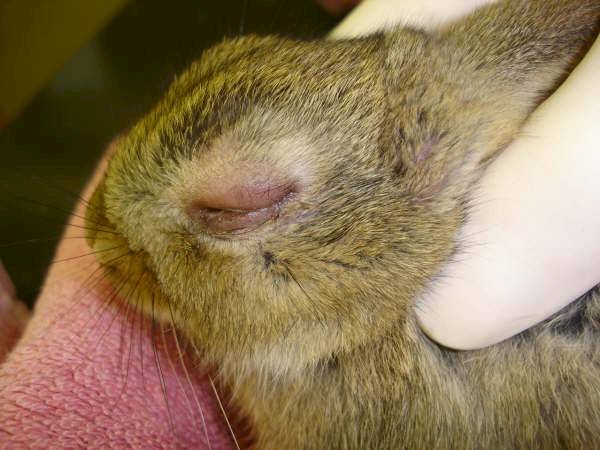

Myxomatosis is a serious disease accompanied by inflammatory processes, purulent conjunctivitis. Bumps and blisters appear on the body. Failure to recognize the symptoms of the disease in one rabbit can lead to the death of the entire livestock.
Symptoms of the disease
Obvious symptoms of the disease appear, as a rule, only 20 days after the onset of the infection. But with a daily examination of animals, the disease can be detected at an early stage: red spots appear on the skin, and small nodules on the ears and eyelids.
What are the symptoms of the disease:
- The temperature can rise to 41 degrees, then return to normal.
- The eyes are watery, and purulent clots appear on them, as in conjunctivitis.
- Tumors appear on the body, growing to the size of a pigeon's egg.
- On the genitals and head, gelatinous edema may occur.
- In rabbits, ears droop, folds appear on the scalp.
- The oral cavity becomes inflamed. This symptom is accompanied by purulent discharge, wheezing.
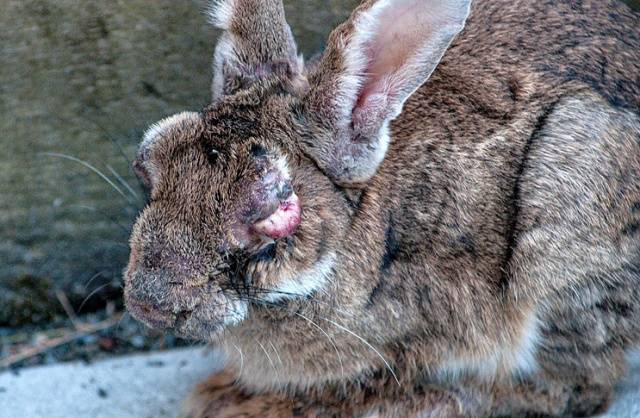

Treatment features
If you notice the symptoms of rabbit disease in a timely manner, then the treatment has a positive effect. It is carried out by a veterinarian with strong antibiotics and immunomodulators.Recommended for subcutaneous injections:
- Gamavite;
- Ringer;
- Baytril.
In addition, special drops are instilled into the nose, iodine is used to treat the wounds.
Sick and recovered animals are kept separately from the main herd. Rehabilitation after recovery takes two to three months. Keep rabbits in a warm room.
A warning! Recovered rabbits most often remain carriers of the virus.
Many rabbit breeders shoot videos about treating their pets at home:
Traditional methods of treatment
Such an ear disease in rabbits, as myxomatosis, can be treated independently with folk remedies if it is detected at an early stage:
- Sunflower oil is fried and treated with lesions.
- Wounds on the ears are treated with urine, keeping it in the sun for at least 3 hours.
- Feed rabbits with ear disease with fresh leaves of horseradish.
- The food should be nutritious, you can add pumpkin pulp and freshly made pineapple juice to it.
- If breathing is difficult, aromatherapy is performed using eucalyptus oil.
- For injection, a solution of camel thorn is injected into the lower leg.
Attention! It is necessary to keep sick animals at a temperature not higher than 20 degrees.
Prophylaxis
As a rule, myxomatosis begins in late spring, when insects, carriers of the virus, appear. How to protect eared pets from illness:
- Block insect access with safety nets.
- Examine rabbits' skin, ears and fur 2-3 times a week.
- Provide timely vaccinations at an early age.
- Keep cells clean, treat with special agents.
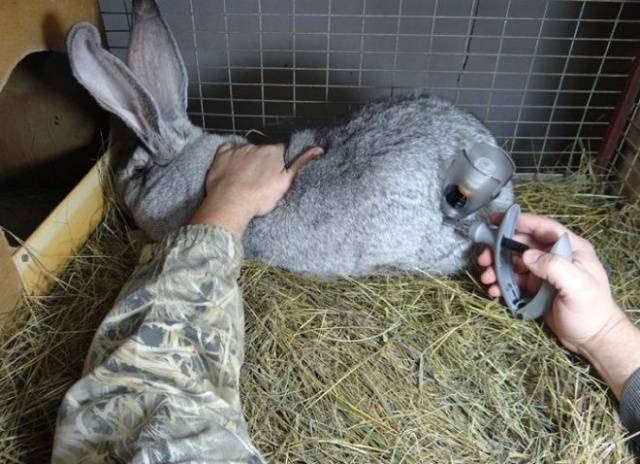

Cell processing after disease
Cells after diseased animals are treated:
- Glutex;
- Virkon;
- Ecocide C;
- 5% alcohol solution of iodine.
You can cleanse cells with folk remedies:
- whitewash with lime;
- treat with hot liquor;
- wash with a whiteness solution.
Important! This treatment is recommended to be carried out in all cages, even with healthy rabbits.
List of simple remedies for ear mites in rabbits
For the treatment of an uncomplicated type of parasitic invasion and as a prophylaxis of the disease, one-component acaricides are used - preparations created for the destruction of arthropod insects.


Perhaps, to eliminate tick-borne infestation, it is better to use pharmacy products that are inexpensive, but fight scabies more productively and faster.
The medicine is produced in liquid solutions or aerosol cans, the method of application is indicated in the instructions, the dosage is prescribed by a veterinarian.
Basic requirement before use - preliminary cleaning of the rabbit's ears from crusts so that the active substance has unhindered access to the skin and can fully manifest its healing properties.
| A drug | Description | How to use | special instructions |
| Stronghold | Selamectin based product, solution available in metered pipettes | A drop of the solution is applied to the skin area | Cannot be used for pregnant females and rabbits |
| Aversectin ointment | The substance Aversectin-C is active against larvae and adults. The medicine has local and systemic effects | The frequency of treatment depends on the degree of damage: it is carried out 1-2 times, with an interval of a week or 5 days. For instillation into the ear, the composition can be melted | Not suitable for the treatment of pregnant and lactating females, rabbits up to 2 months old, malnourished animals |
| Celandine Maximum | Insectoacaricidal agent is produced in the form of a spray, the active ingredient is permethrin. Not absorbed into the bloodstream, but accumulates in the epithelium, hair, hair follicles and sebaceous glands | The dosage depends on the size of the rabbit, the treatment is carried out 2 or 3 times, after 5-7 days | Not used for concomitant infectious diseases and perforation of the tympanic membrane |
| Lawyer | Drops for cats are suitable for rabbits, the drug contains imidacloprid and moxidectin | Applied once directly to the skin | The drug should not be instilled into the ears. The remedy is not recommended for young animals, pregnant and lactating rabbits are prescribed only by a veterinarian |
| Acaromectin | The solution contains ivermectin | Ears are treated twice after 10 days | It is not applied during reproduction, rabbits are allowed to use from 2 months |
| Dana Spot-on | Tube pipettes contain fipronil, the compound is not absorbed into the bloodstream, accumulates in the skin, remains active for up to one and a half months | The medicine is applied to the skin, treated at least 2 times, the interval is a week | For rabbits, the drug is indicated from 4 months, for rabbit rabbits - under the supervision of a veterinarian |
| Mycodemocide | As an antiparasitic agent, it contains chlorophos, sea buckthorn oil in its composition softens, and isopropyl alcohol disinfects the skin | It is applied in a thin layer with an interval of 5-7 days until recovery | The solution is contraindicated in pregnant and lactating females, it is prescribed to young animals from 2 months |
| Butox | The concentrated emulsion is intended for the treatment of premises and animals, suitable for large farms | For the treatment of auricles, the dose is 1 ml of the drug per 1 liter of cool water. | During pregnancy, the solution is approved for use. |
Important! If, after a single treatment, the symptoms of the disease have disappeared, you should not stop the treatment. The active substance of any acaricide is effective only against larvae and adults, it does not work on eggs, repeated application of the drug is required to eliminate newly hatched parasites.
Purulent otitis media
Purulent otitis media in rabbits in 90% of cases is the result of injuries, hypothermia or parasites. The state of immunity and the quality of nutrition also play an important role. The danger of the disease lies in the spread of inflammation to nearby organs - various parts of the brain, which is fraught with death.
The main symptoms of the disease include:
- Lack of appetite.
- General depression of the animal.
- Itching in the ears, which clearly bothers the rabbit.
- Negative reaction to touching the ears.
- Disturbances in the work of the vestibular apparatus, which are manifested by poor coordination of movements.
Treatment of purulent otitis media should be carried out strictly under the supervision of a veterinarian. To reduce painful symptoms, local ear drops are used, and antibiotics are prescribed to relieve the inflammatory process. The type of antibiotic and the dose should be selected individually by a specialist.
Prevention of ear psoroptosis in rabbits
To prevent the development of psoroptosis on a rabbit farm and in an apartment, it is important to observe preventive measures, which include compliance with sanitary rules and zoological standards.
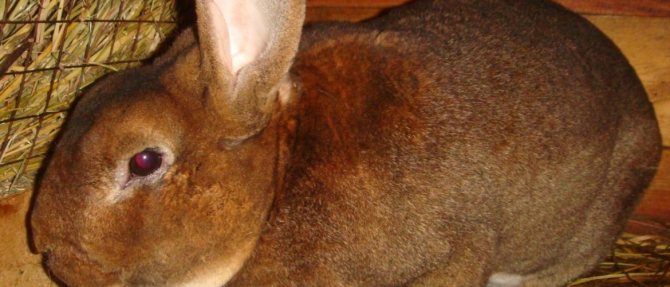

This requires:
- regularly check the ears of rabbits for the presence of parasites;
- isolate the animal if an infection is detected or if an infection is suspected;
- to acquire livestock only on farms that are free from illness;
- keep animals in quarantine for at least a month, during this period, examine them for psoroptosis;
- disinfect the cages and rooms where rabbits live at least once every 6 months, as well as process inventory and disinfect clothing.
In order to prevent infection of young animals, healthy males are chosen for mating, and the ears of the rabbit are examined 2 weeks before the birth.
If an infection is detected, the site is treated with a local antiparasitic agent on the recommendation of a veterinarian.
Ear drop
Falling ears in rabbits are observed quite often and should be the reason for an unscheduled examination of the animal. The most common reasons are:
- Ear injury while raising the rabbit. This can damage cartilage, blood vessels or nerve endings.
- Ingress of foreign bodies.
- Increase in ambient temperature. Most often, the ears fall in the heat of young animals due to the cartilaginous tissue that has not been fully formed.
- Hereditary ear drops. It is characteristic of some breeds of rabbits with large, heavy ears.
- The presence of parasites on the inside or outside of the ear.
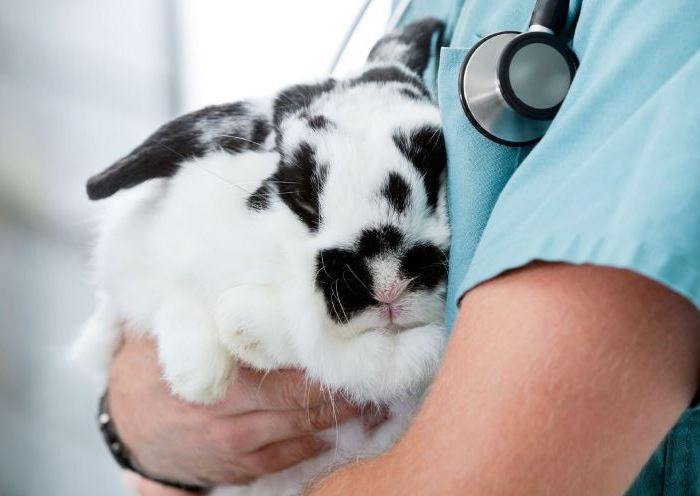

Rabbit being examined by the veterinarian
Correction of a fallen ear is performed symptomatically. If a visual examination has not yielded results, and the animal looks perfectly healthy, then in 99% of cases there is nothing to worry about.
Treatment with products in the form of emulsions
Igor Nikolaev
auto RU
The most popular emulsion against ear mites is Valexon. This drug also has a general antiparasitic effect and is used to combat various types of parasites. It also covers the entire ear surface. The frequency of application of the drug is once every five to seven days. Typically, itch ear mites are removed after two weeks. Other emulsions prescribed against psoroptosis are Cyodrin, Neocidol and Chlorophos.
Whichever method of treatment you choose, whether it is traditional medicine or drugs, you should first consult your veterinarian.

